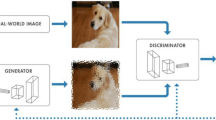Abstract
Existing image databases contain a few diversity of images. Likewise, there is no specific image base available in other situations, leading to the need to undertake additional efforts in capturing images and creating datasets. Many of these datasets contain only a single object in each image, but often the scenario in which projects must operate in production requires several objects per image. Thus, it is necessary to expand original datasets into more complex ones with specific combinations to achieve the goal of the application. This work proposes a technique for image generation to extend an initial dataset. It has been designed generically to work with various images and create a data set from some initial images. The generated set of images is used in a distributed environment. It is possible to perform image generation in this environment, producing datasets with specific images to work in certain applications. The generation of images consists of two methods: generation by deformation and generation by a neural network. With the proposed methods, this work sought to bring as main contributions the specification and implementation of an image generating component so that it is possible to easily integrate it with possible heterogeneous devices capable of parallel computing, such as General Purpose Graphics Processing Unit (GPGPU). In comparison with the existing methods to the proposed one, this one proposes to use the image generator enlarging an initial image bank with the combination of two methods. Some experiments are presented doing generation with handwritten digits to validate the proposed approach. The generator was designed with CUDA and GPU-optimized libraries as TensorFlow-specific modules. The results obtained can optimize the integration process with the simulation of possible stimuli choices, avoiding problems in the generation of image phase tests.
















Similar content being viewed by others
References
Balaban M Titan rtx deep learning benchmarks, https://lambdalabs.com/blog/titan-rtx-tensorflow-benchmarkshttps://lambdalabs.com/blog/titan-rtx-tensorflow-benchmarks, 2018. [Online; Acessado em 11 de janeiro de 2019]
Bhatia N, Ashev V (2010) Survey of nearest-neighbor techniques. Int J Comput Sci Inf Sec
Cohen G, Afshar S, Tapson J, van Schaik A (2017) Emnist: Extending mnist to handwritten letters. In: 2017 international joint conference on neural networks (IJCNN), pp 2921–2926
Creswell A, White T, Dumoulin V, Arulkumaran K, Sengupta B, Bharath AA (2018) Generative adversarial networks: an overview. IEEE Signal Proc Mag 35:53–65
Delorme N (2014) Mixed-signal verification challenges. In: 2014 10th conference on Ph.D. research in microelectronics and electronics (PRIME), pp 1–1
Garris MD (1992) Design and collection of a handwriting sample image database. Soc Sci Comput Rev 10:196–214
Hawkins D (2004) The problem of overfitting. J Chem Inf Comput Sci
Horsley L, Perez-Liebana D (2017) Building an automatic sprite generator with deep convolutional generative adversarial networks, IEEE, Conference on Computational Intelligence and Games, CIG New York, NY, USA (2017), pp 134–141
Ieee standard for the functional verification language e, IEEE Std 1647-2016 (Revision of IEEE Std 1647-2011) (2017), pp 1–558
Kanere K, Mhatre H, Jaiswal A High performance parallel processing to cluster visually similar image data sets
Karras T, Aila T, Laine S, Lehtinen J (2017) Progressive growing of gans for improved quality, stability, and variation. arXiv:1710.10196
Khronos GI OpenCL Overview - The Khronos Group Inc, https://www.khronos.org/opencl, 2018. [Online; Acessado em 12 Abr. 2018]
Krizhevsky A, Hinton G (2009) Learning multiple layers of features from tiny images, Master’s thesis, Department of Computer Science, University of Toronto, pp 1–60
Kumar V, Garg ML Deep learning in predictive analytics: A survey
Lab SV ImageNet, http://http://www.image-net.org/index, 2016. [Online; accessed 19-April-2018]
Lampert CH, Pucher D, Dostal J Animals with Attributes 2, https://cvml.ist.ac.at/AwA2, 2018. [Online; Acessado em 19 Jul. 2018]
Lawrence J, Malmsten J, Rybka A, Sabol DA, Triplin K (2017) Comparing TensorFlow deep learning performance using CPUs, GPUs, Local PCs and Cloud, Student-Faculty Research Day, CSIS, Pace university, Pleasantville, New York
Ma Y, Guo G (2014) Support vector machines applications
Osadchy M, Hernandez-Castro J, Gibson S, Dunkelman O, Pérez-Cabo D (2017) No bot expects the deepcaptcha! introducing immutable adversarial examples, with applications to captcha generation. IEEE Trans Inf Forensics Sec 12:2640–2653
Author information
Authors and Affiliations
Corresponding author
Additional information
Publisher’s note
Springer Nature remains neutral with regard to jurisdictional claims in published maps and institutional affiliations.
Rights and permissions
About this article
Cite this article
Silva, T.W., Reis, H., Melcher, E.U.K. et al. An image generator based on neural networks in GPU. Multimed Tools Appl 81, 36353–36374 (2022). https://doi.org/10.1007/s11042-021-11489-5
Received:
Revised:
Accepted:
Published:
Issue Date:
DOI: https://doi.org/10.1007/s11042-021-11489-5




